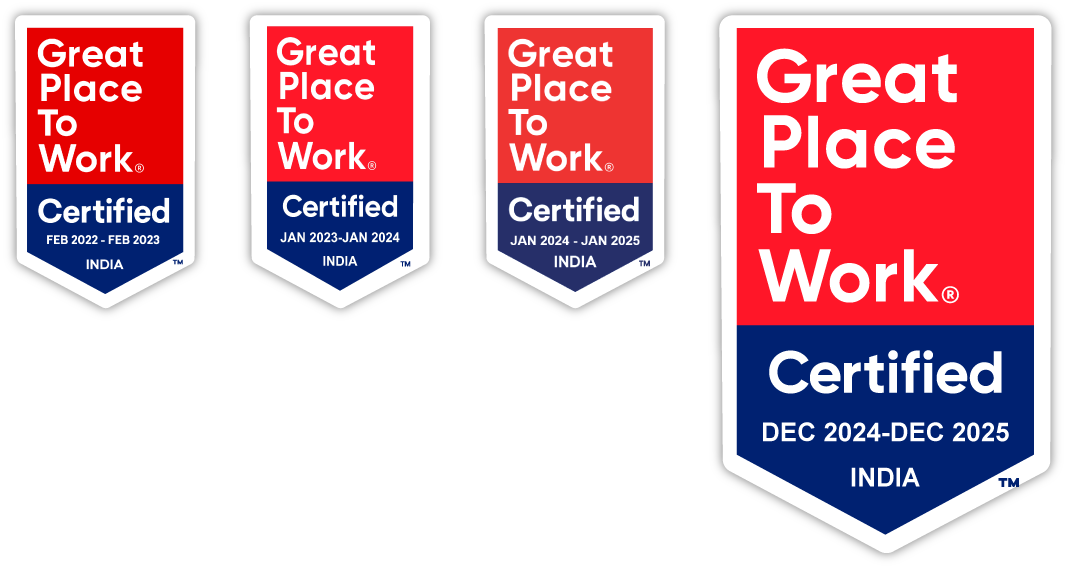Author- Prabhu Pandian (Enterprise Architect, Scientific Informatics)
What Are AI Agents?
AI agents in the Life Sciences industry are increasingly used to automate complex, goal-driven tasks that traditionally required significant human effort. These agents operate autonomously across systems, using large language models (LLMs) to make decisions, interact with tools, and adapt to evolving requirements.
Key use cases of agentic AI in Life Sciences include:
- Streamlining drug discovery by automating literature review, hypothesis generation, and data curation
- Automating content creation for structured documents such as Regulatory products, protocols, and scientific reports
- Driving regulatory compliance through intelligent tracking of submission requirements, validation rules, and documentation consistency
- Enhancing competitive intelligence by summarizing insights from internal and external data sources
- Assisting medical affairs with automated response generation, KOL profiling, and knowledge dissemination
Why Are AI Agents Important?
Consider a scenario in the life sciences domain, where a user needs to search for research papers related to oncology and neurology. Traditionally, this involves navigating a vast inventory of documents—similar to finding the right book in a massive library—making the process time-consuming and error-prone.
While Generative AI (Gen AI) can assist by understanding natural language queries and summarizing content, AI agents take this a step further. Agents not only interpret the user’s query but can autonomously search across multiple sources, refine the query if needed, filter relevant documents, and return structured insights—all with minimal human intervention. In this case, the agent acts like an intelligent research assistant, streamlining the search process by chaining together perception, search, and filtering actions based on limited user input.
Can we do this with Gen AI alone? How do agents help?
Yes, this can be done using Gen AI without AI agents. However, AI agents simplify and automate the process by acting as orchestration layers built on top of LLMs. A common misconception is that agents work independently, but in reality, they are just libraries or
frameworks that help developers avoid writing repetitive logic for interacting with LLMs. These agents typically manage tasks like filling API parameters, invoking tools, and chaining workflows, while the LLM still performs the core reasoning. While most AI agents rely on LLMs, some can operate without them—using rule-based logic instead—but this requires more manual coding and lacks flexibility.

Before AI agent After

After AI agent Intervene
Real-World Example: AI Agent in a RAG Workflow
Imagine a Retrieval-Augmented Generation (RAG) model processing medical literature from sources like PubMed. The pipeline is enhanced by AI agents at various stages:
- File Discovery & Download: The agent downloads content until it identifies the correct context.
- Validation & Segregation: It detects invalid or image-heavy files and routes them through specialized LLM pipelines.
- Source Selection: The agent picks the correct domain-specific vector store (e.g., oncology) for accurate retrieval.
- Query Refinement: When a user submits a vague or incorrect question, the agent validates and refines it using reasoning.
This orchestration ensures high accuracy, relevance, and speed in delivering scientific answers.

Value Delivered by AI Agents
The introduction of AI agents brings tangible benefits:
- Reduced Human Intervention: No need to manually code every logic step.
- Contextual Understanding: Queries are restructured for better LLM results.
- Dynamic Decision-Making: AI agents interact with predictive models to guide decisions.
- Domain Specialization: Supports multiple therapeutic areas seamlessly.
Integration in Our Pipeline
We have implemented AI agents using three major frameworks:
- LangChain – Enables chaining of LLM-driven tasks and retrieval workflows.
- LangGraph – Allows visual flow control with conditionals and observability.
- AutoGen – Facilitates agent-to-agent conversation and tool usage with minimal setup.
This layered integration ensures modularity, traceability, and performance optimization across the knowledge processing lifecycle.
For example, in our Life Sciences use case for regulatory document generation, LangChain helps break down and chain multiple tasks such as entity extraction, content validation, and formatting. LangGraph allows us to introduce decision points (e.g., missing metadata or data inconsistency) with conditional paths that can notify users or trigger fallback workflows. Meanwhile, AutoGen enables one agent to summarize a research paper and another to validate it against regulatory templates—working collaboratively through tool invocation and structured dialogue. This approach helps us build reliable, reusable AI workflows tailored to real-world biomedical challenges
Popular AI Agent Frameworks in the Market
There are several prominent AI agent frameworks available, each designed to address specific needs within the AI and machine learning landscape. Below is an overview of some widely adopted frameworks, highlighting their core capabilities:
- AutoGen: Facilitates multi-agent conversations equipped with memory, making it ideal for supporting collaborative workflows.
- Auto-GPT: Enables autonomous, task-driven execution with minimal human intervention, streamlining complex processes.
- Ray: Provides a distributed computing framework that allows seamless scaling of AI and machine learning workloads.
- OpenAI Gym: Offers a standardised environment for experimentation in reinforcement learning, supporting iterative development and benchmarking.
- Semantic Kernel: Orchestrates various skills, planners, and connectors to build enterprise-grade AI applications.
- BabyAGI: Acts as a lightweight, autonomous task manager designed for iterative execution towards defined goals.
- Haystack: A flexible retrieval-augmented generation (RAG) framework suitable for building production-level search and question-answering systems.
- LangChain: A general-purpose agent and RAG framework with extensive integrations, supporting a broad range of applications.
- LlamaIndex: Specialises in document indexing and retrieval pipelines, optimised for RAG-based use cases.
- LangGraph: Constructs stateful, multi-step agent workflows using a graph-based control structure, enabling complex flow management.
Final Thoughts
AI agents are revolutionizing the way we interact with and extract insights from data. In the life sciences industry, where time and accuracy are paramount, AI agents provide the agility, intelligence, and autonomy needed to stay ahead.
By combining reasoning, decision-making, and seamless integration with LLMs, AI agents are not just tools—they are intelligent collaborators.


